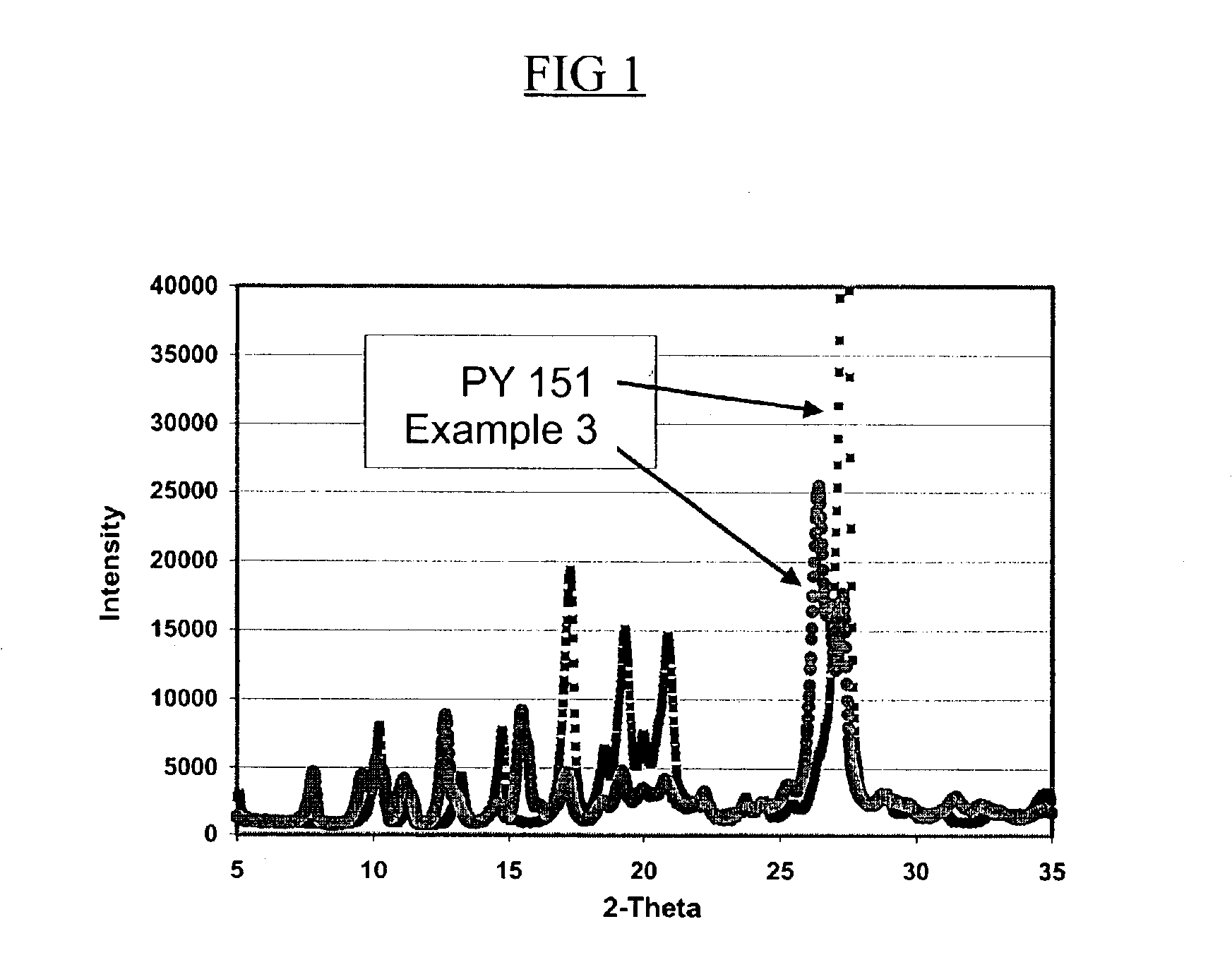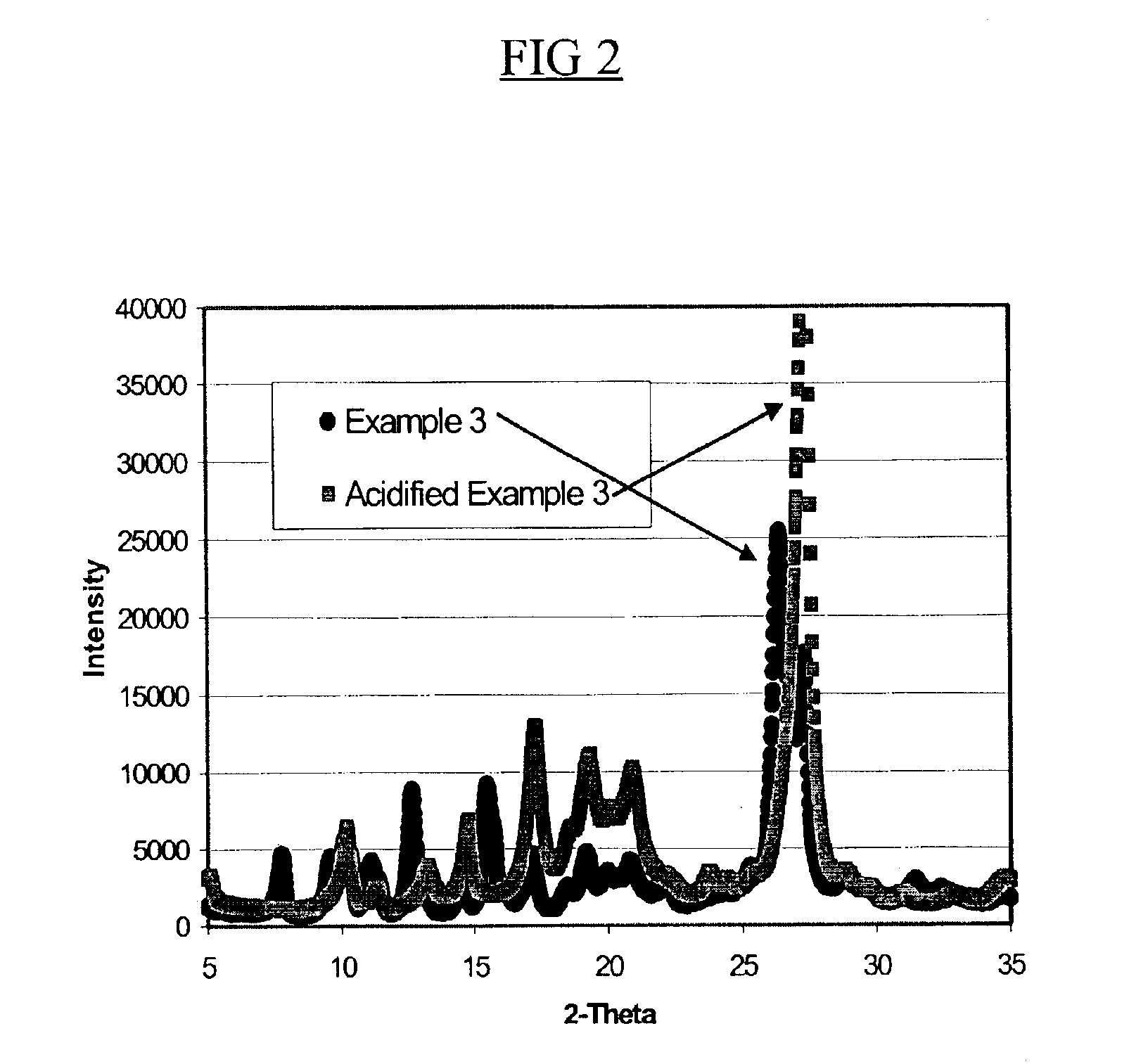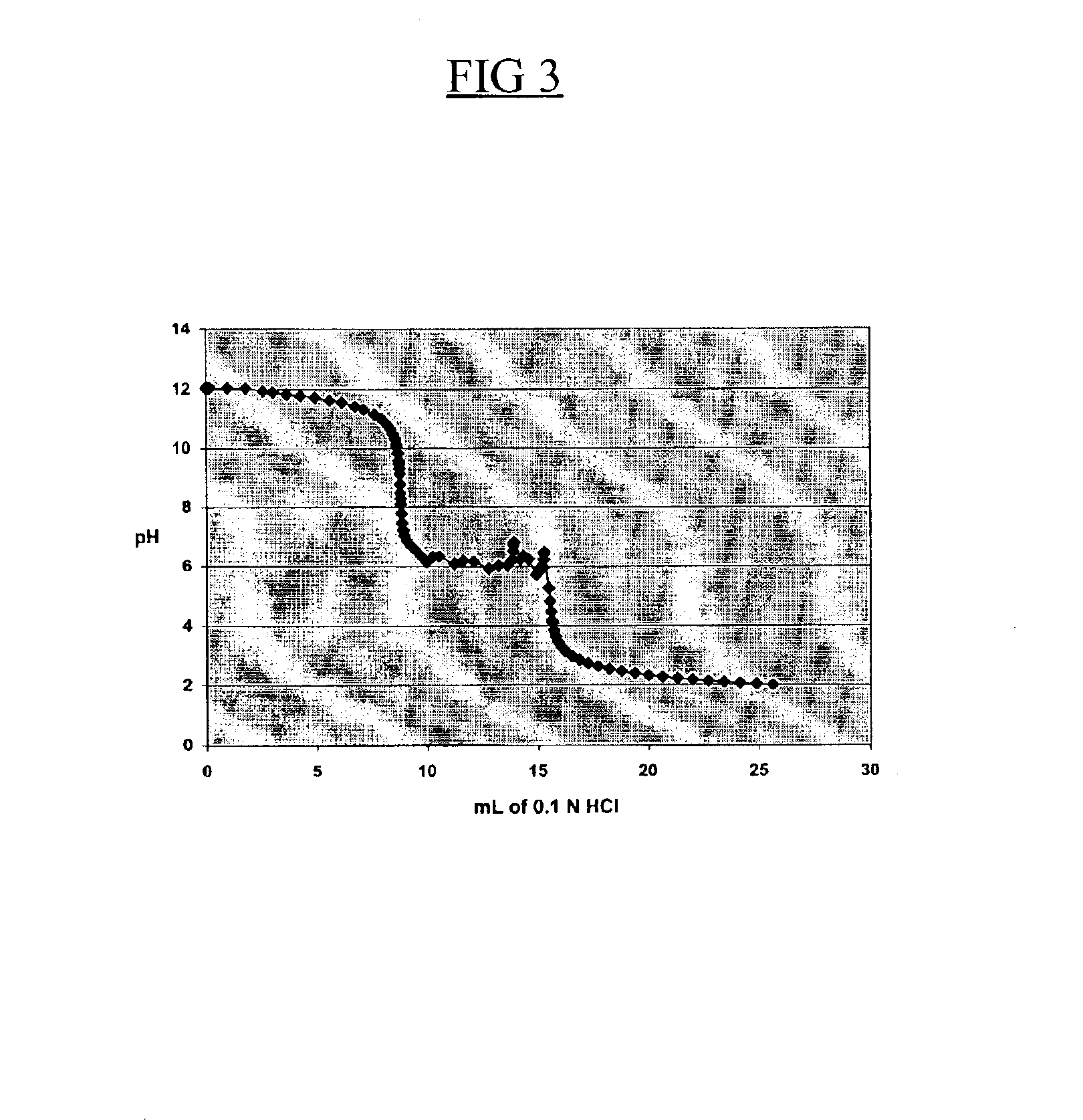Modified organic colorants and dispersions, and methods for their preparation
a technology of which is applied in the field of preparing modified organic colorants and dispersions, can solve the problem that pigments alone are not readily dispersed in liquid vehicles, and achieve the effect of reducing the number of pigments
- Summary
- Abstract
- Description
- Claims
- Application Information
AI Technical Summary
Benefits of technology
Problems solved by technology
Method used
Image
Examples
example 1
[0052]To a 250 mL beaker was added 95 grams of a 0.1 N NaOH solution followed by 5 g of Pigment Yellow 151 (Hostaperm Yellow 4G, available from Clariant Corporation). The mixture was then sonicated using a Sonicator® 3000 (available from Misonic Incorporated) for 30 minutes. The resulting product was a modified yellow colorant dispersion with a pH of 10 and a mean volume particle diameter of 349 nm (determined by UPA 150, from Microtrac).
[0053]This example shows an embodiment of the method of the present invention in which both the step of combining the components and the particle size reduction step are done simultaneously under high shear conditions, and sonication is used.
example 2
[0054]The modified yellow colorant dispersion of Example 1 was sonicated for an additional 60 minutes. The mean volume particle size was found to be 260 nm. This dispersion was purified by ultra-filtration membrane (available from Spectrum Lab Inc, with 0.05 μm rating) until the permeate conductivity dropped to 30 μs / cm. The mean particle size was found to be 260 nm and the sodium level was determined by combustion analysis to be 4.2% by weight.
[0055]The zeta potential of the dispersion was determined using a Zeta Plus (from Brookhaven Instrument Corp.). Results are shown in the Table 1 below:
[0056]
TABLE 1In 1 mM HClIn 1 mM KClIn 1 mM KOH−6 mV−36 mV−32 mV
[0057]The results show that the modified yellow colorant dispersion has a negatively charged surface, consistent with the sodium analysis. Furthermore, the surface tension of the above dispersion was also measured (using a Kruss Digital Tensiomert K-10 from Kruss USA) and found to be 71 dynes / cm, which indicates that the stability o...
example 3
[0058]The modified yellow colorant dispersion of Example 2 was sonicated for an additional 90 minutes and centrifuged at 5000 rpm for 1 hr (using a Beckaman L-80 Ultracentrifuge and a Type-19 rotor). The physical properties of the resulting yellow dispersion are listed in Table 2 below:
[0059]
TABLE 2pH10Surface Tension 67 dynes / cmViscosity1.98 cPMean Volume Particle Size 141 nmMean Volume Particle Size after 5 Weeks 149 nmStorage at 70° C.Sodium level (% by weight) 4.4%
[0060]As shown in Table 2, the resulting modified yellow colorant dispersion was colloidally stable even after 5 weeks storage at elevated temperature.
PUM
| Property | Measurement | Unit |
|---|---|---|
| particle size | aaaaa | aaaaa |
| particle size | aaaaa | aaaaa |
| particle size | aaaaa | aaaaa |
Abstract
Description
Claims
Application Information
 Login to View More
Login to View More - R&D
- Intellectual Property
- Life Sciences
- Materials
- Tech Scout
- Unparalleled Data Quality
- Higher Quality Content
- 60% Fewer Hallucinations
Browse by: Latest US Patents, China's latest patents, Technical Efficacy Thesaurus, Application Domain, Technology Topic, Popular Technical Reports.
© 2025 PatSnap. All rights reserved.Legal|Privacy policy|Modern Slavery Act Transparency Statement|Sitemap|About US| Contact US: help@patsnap.com



